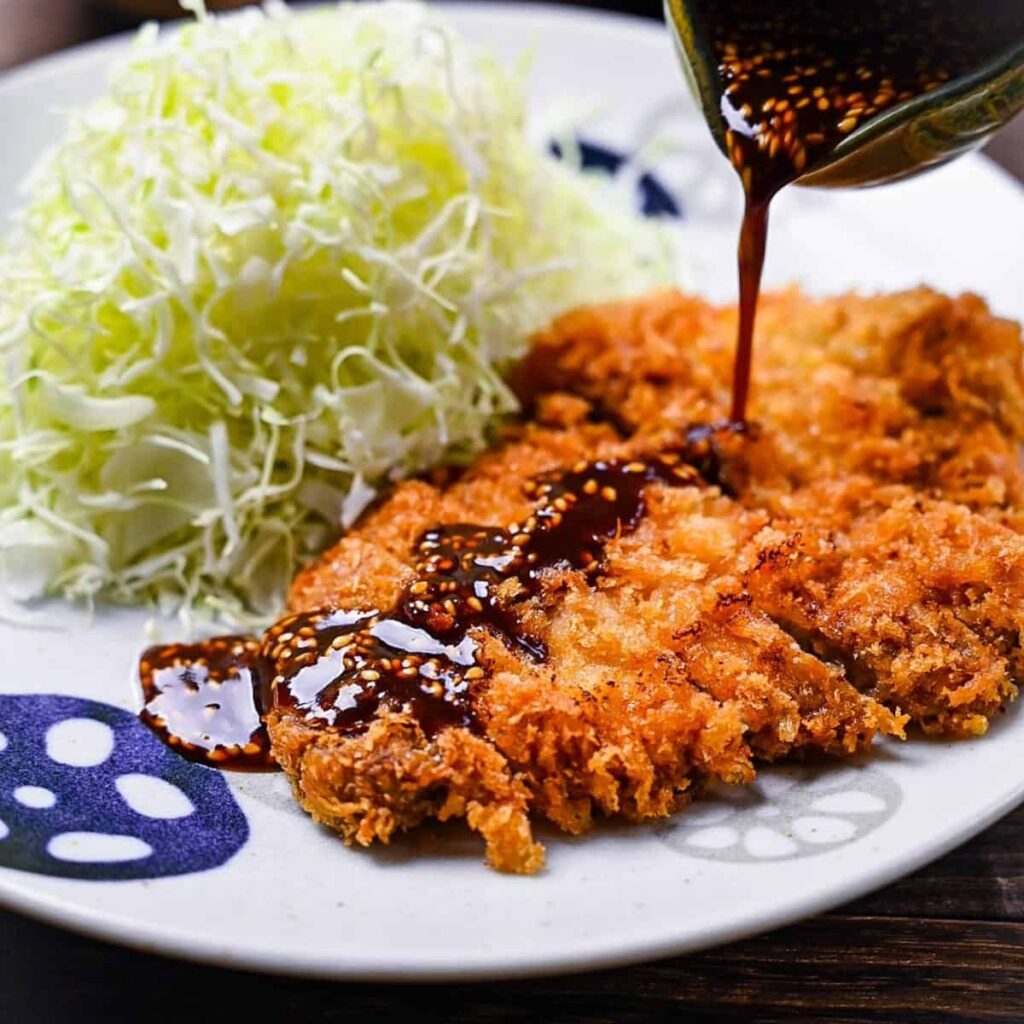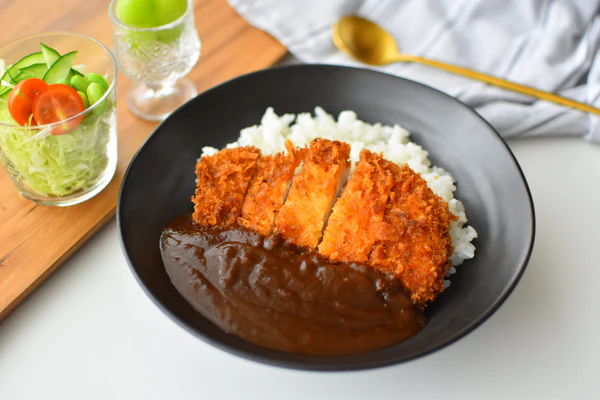Born from the meeting of Japanese technique and Western influence, Tonkatsu is a beloved Japanese dish that delivers the ultimate combination of crispiness and tenderness. It is, quite simply, a thick-cut pork cutlet that has been breaded in light, airy panko breadcrumbs and deep-fried to a golden perfection.20
A Dish with History
The name Tonkatsu is a mashup: ‘Ton’ (豚) is the Japanese word for pork, and ‘Katsu’ is a shortening of katsuretsu, the Japanese pronunciation of the English word ‘cutlet’.21 The dish originated in Tokyo in the late 19th century as a yōshoku (Western-style) dish, but it has evolved into a uniquely Japanese culinary icon.22
The Panko Perfection
The key to Tonkatsu’s legendary texture is panko breadcrumbs.23 Unlike traditional Western breadcrumbs, panko is made from crustless white bread that is processed into large, sharp flakes. These flakes absorb less oil and stand away from the meat, creating a light, shatteringly crisp, and non-greasy crust that gives the dish its signature ‘katsu’ crunch.
Tonkatsu is traditionally served sliced into easy-to-eat strips, accompanied by a mountain of thinly shredded raw cabbage (which aids digestion and provides a fresh contrast) and drizzled with a rich, tangy, and savory Tonkatsu Sauce—a thick, dark condiment reminiscent of a spiced Worcestershire sauce.24 It’s a hearty, satisfying dish that stands as a pillar of Japanese comfort cuisine.

Recipe: Classic Tonkatsu (Pork Cutlet)
Achieving that famous crispy-tender result is all about proper preparation and frying technique.
Yields: 2 servings25
Prep Time: 20 minutes26
Cook Time: 10 minutes
Ingredients
- $2$ Boneless Pork Loin Chops (about $1\text{-inch}$ thick, $6\text{-8 oz}$ each)
- Salt and Black Pepper, to taste
- $\frac{1}{4}\text{ cup}$ All-Purpose Flour27
- $1$ Large Egg, lightly beaten28
- $1\text{ cup}$ Panko Breadcrumbs (Japanese-style)29
- Vegetable or Canola Oil, for deep frying30
- Shredded Cabbage, to serve31
- Tonkatsu Sauce, for drizzling/dipping32
Instructions
- Prepare the Pork: Place the pork chops between two sheets of plastic wrap. Using a meat mallet or the bottom of a small skillet, gently pound the cutlets to a uniform thickness of about 33$\frac{1}{2}\text{ inch}$.34 Make 35$2-3$ small nicks in the connective tissue or fat band around the edges of the cutlets to prevent them from curling up during frying.36 Season both sides generously with salt and pepper.
- Set up the Breading Station (Sankaku-ko): Arrange three shallow dishes side-by-side: one with flour, one with the beaten egg, and one with the panko breadcrumbs.37
- Bread the Cutlets: Dredge each pork cutlet first in the flour, shaking off the excess.38 Next, dip it entirely in the egg mixture, letting any excess drip off. Finally, press the cutlet firmly into the panko breadcrumbs on both sides, ensuring a thick, even, and well-adhered coating.39
- Heat the Oil: Pour enough oil into a deep, heavy-bottomed pot or skillet to reach a depth of at least $1.5\text{ inches}$. Heat the oil to 40$340^{\circ}F$ (41$170^{\circ}C$).42 (Test by dropping a panko flake in; it should sizzle immediately and float to the surface.)
- Fry the Tonkatsu: Gently lower one cutlet into the hot oil.43 Fry for about $3$ to $4$ minutes per side, turning once, until the crust is a deep golden-brown and crispy.
- Drain and Slice: Remove the Tonkatsu from the oil and let it drain on a wire rack (preferable) or on paper towels.44
- Serve: Slice the cutlet into $\frac{3}{4}\text{-inch}$ wide strips. Arrange on a plate with a generous portion of thinly shredded cabbage. Drizzle the Tonkatsu sauce over the sliced cutlet or serve it on the side for dipping. Serve immediately with rice and a bowl of Miso Soup.


Leave a Reply